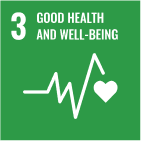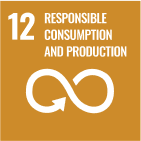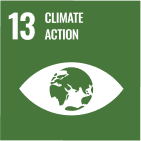Manufactured capital
sdg:
sdg:
-
3
-
8
-
9
-
12
-
13
Sustainable building
GRI 2-25, 3-3
We observe SDG 9, which aims to build resilient infrastructure, promote inclusive and sustainable industrialization, and foster innovation in constructing new facilities, as well as in the adaptation or renovation of acquired hospitals. To achieve this, we have specifications outlined in our standardization manuals. These guidelines include:
- Energy efficiency linked to the building envelope, lighting system, and HVAC system;
- Equipment providing better energy efficiency;
- Light-colored coatings on roofs and facades for sunlight reflection and consequent reduction of thermal load;
- Water-based paints, free of volatile organic compounds, without pigments based on heavy metals, etc.;
- Architectural design based on established bioclimatic zone definitions to avoid deep solar radiation and allow for natural lighting and ventilation;
- Organized construction site with more environmentally sustainable criteria, foreseeing water reuse, reuse of rainwater and solid residues produced, and separation of non-reusable waste for disposal;
- Construction Waste Management Plan (PGRC,C in Portuguese) according to Conama’s Resolution 307/2002;
- Scaffolding and props made of metal or other reusable material;
- Materials and equipment meeting sustainability criteria such as safety, durability, and efficiency to generate less waste, reduce wastage, and have a lower environmental impact;
- External floors that facilitate rainwater infiltration into the soil to avoid overloading the rainwater collection system;
- Specific physical space for collecting and storing recyclable materials;
- Preferential use of local labor, materials, technologies, and raw materials for execution;
- Rainwater harvesting and utilization system, adding elements to the hydraulic system to enable its use for garden irrigation and cleaning of waste containers;
- Air conditioning units acquired in accordance with Brazilian standards;
- Renewable energy;
- Low-pressure, water-saving equipment, such as faucets with aerators, equipped with sensors or automatic shut-off, toilets with sensors or dual flush valves, or vacuum flush;
- Irrigation system that reduces water consumption, such as drip, micro-sprinkler, or programmable electronic mechanism for automatic irrigation;
- Zoned lighting using light switches to allow for localized use and take advantage of natural light, with the presence of motion sensors in places that do not require constant light, such as garages, corridors, elevator hallways and stairs;
- Compact, high-efficiency or tubular, high-performance fluorescent lamps;
- ABNT NBR 15920:2011 standard applied as a reference for the economic sizing of electrical cables based on losses by joule effect;
- Equipment approved by the Brazilian Labeling Program of the National Institute of Metrology, Quality, and Technology (Inmetro), chosen among the most efficient;
- Air cooling technologies enabling system automation to allow proper zoning of air-conditioned environments.





